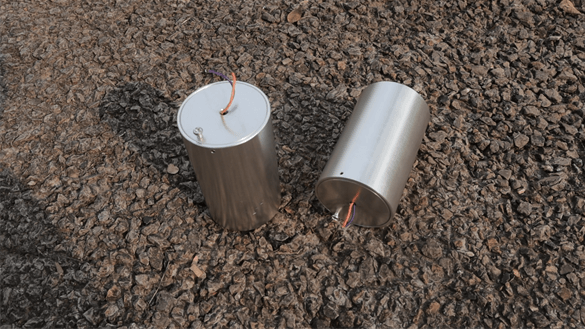With the further development of seismic exploration technology, the exploration targets have shifted from structural exploration to lithologic formation, complex structure and deep oil and gas exploration, thus higher and higher requirements have been put forward for the imaging accuracy of seismic data.
Only by broadening the main frequency of seismic data, high-resolution seismic data could be obtained, and then the imaging accuracy of geological body and lithologic body can be improved. The Development Direction of Seismic Geophone of broadening the main frequency mainly revolves around how to obtain lower frequency and higher frequency components.

Some scholars found that low-frequency seismic data played an important role in the processing of Full Wave Inversion FWI, and low-frequency seismic data was one of the main means to solve the energy transmission in igneous areas (energy shielding). Therefore, it is an economical and feasible solution to get more low-frequency components from the geophone side.
A low-frequency geophone is a seismic sensor which frequency is less than 5Hz, with the direction of vertical component, horizontal component and three-component. The low-frequency geophone collects low-frequency exploration signal and the wavelength for low-frequency signal is longer than high-frequency signal, and also low-frequency signal has stronger anti-shielding and anti-absorbing ability and has the strong penetrability advantages.
Low frequency geophone could not only be used in the deep seismic survey ( deep oil and gas exploration) but also widely used in advance prediction, natural seismic survey, pulse micro seismic measurement for the bridge, dam, highway and railway, safety monitoring, fissure monitoring in shale gas extraction, seismic safety evaluation and so on. Various low-frequency and high-sensitivity geophones(Mainly geophone 1Hz, Geophone 2Hz, Geophone 2.5Hz and Geophone 4.5Hz) supplied by Seis Tech have been widely used in the above-mentioned fields.

It can be predicted that in the future, the Development Direction of Seismic Geophone data acquisition will be applied from hundreds of thousands of channels to millions of channels, but the current use of analog geophone string will bring great challenges to the field layout work.
Adopting low frequency and high sensitivity geophone could not only reducing the field lay-out workload, but more importantly, broadens the effective high frequency components and low frequency components from the receiving end, so as to improve resolution of seismic imaging and meet the requirements of fine seismic exploration. However, it must be noted that in deep seismic exploration.
Development Direction of Seismic Geophone
The use of low-frequency geophones should meet the following conditions:
1). Single-point low-frequency geophones are suitable for the areas with high SNR( signal-to-noise ratio) and the coverage times may not be too high.
2). If low frequency geophones are used in areas with low SNR( signal-to-noise ratio), then high coverage times are needed and then interference waves will be effectively suppressed, then low frequency geophones could obtain better seismic data quality.
Anyway, we can see that low frequency geophone could broaden the main frequency of seismic data at the receiving end, which is an effective way to improve resolution and fidelity, and also low frequency geophone has obvious advantages in the study of prestack migration attribute. Single point low frequency geophones could also greatly reduce the field laying out workload, which is a Development Direction of Seismic Geophone in the future.

